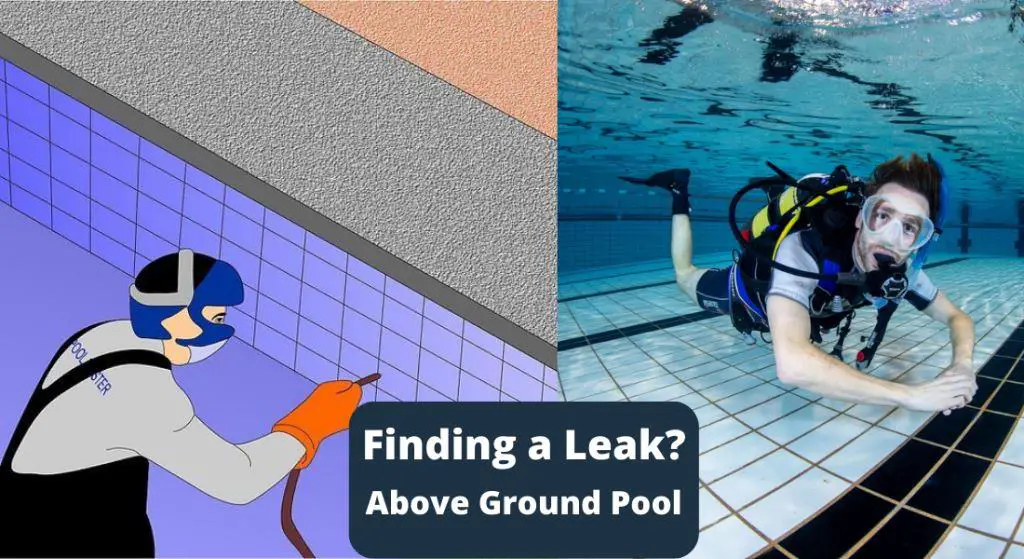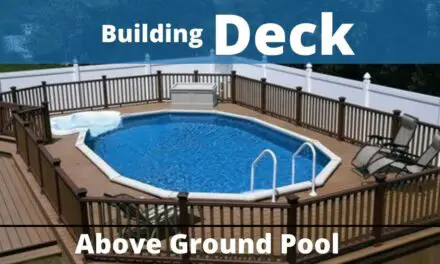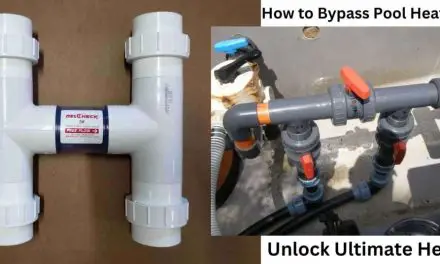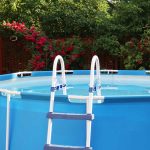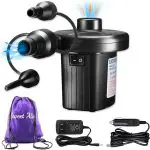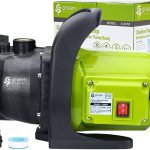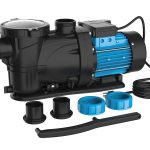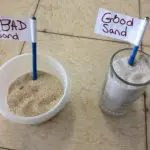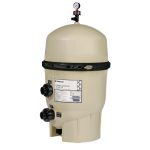Finding pool leaks early on makes it much simpler to fix them, so becoming familiar with their warning signs is essential. We will go through how to find a leak in an above ground pool and what to do if one happens.
May Your pool starts losing significant amounts of water and flushing drainage. Coatings will decay, and other components of your pool will shift, settle, or wear out. Because pools are designed to be impervious.
Leaks in pools can occur through any fixtures or add-ons, the infrastructure, or even the pool shell itself. Leaks must be fixed in order to avoid the pool’s internal structures. Also, it helps to clear away the fill dirt that holds the pool walls and pool deck, as well as store water, temperature, and chemicals. Before contacting support if you think there might be a leak, look over the information below:
How to Find a Leak in an Above Ground Pool:
Step 1: Examine Pool’s Equipment:
First, you have to examine the equipment, although you believe the leak is inside the pool. Try to keep the equipment safe. Clear any unwanted bushes around the pool equipment, put stuff away, and get rid of insect mounds. Additionally, ensure that any living pest infestations are wiped from the site.
Then activate the pool pump. During this time, leaks related to equipment will seep excessively.
Step 2: Use Food Coloring:
To rapidly find a leak, you can dye your above-ground pool using colorant. Go through the steps-
1. Switch on the pump to transfer the water and color, and switch on the pump.
2. Sprinkle a few drops of colorants into the pool.
3. You can detect a leak whether the dye accelerates away from the pump.
Step 3: Examine the Surrounding Area:
Your above-ground pool’s surroundings may give hints about where the leak is coming from. If there is a significant leak, you will see a puddle increasing underneath the area. Are you still unable to locate the specific position? Go through the solution how to find a leak in an above-ground pool-
● Bucket Test to find a leak:
Put a big bucket filled with water on your pool stairs. Trace the bucket’s interior and exterior sides with the water level. After loading and placing it correctly, examine the water line with duct tape or a permanent marker. After approximately a day, shut off the pump and go to the bucket.
If somehow the line starts to drop, you will find a leak in the pool. Go around the pool once more, paying close attention to the walls for any indications of a leak. You can enter the water after you believe you have located it.
For a reliable result, the water in the pool needs to be calm. Send the dye-filled syringe in the direction of the wall you think is leaking. You will see the dye migrating along the wall if there is a leak. Label the precise location of the leak with duct tape. It is crucial to do this to avoid patching up the leak in the incorrect place.
Step 4: Find Bubbles in the Liner:
Water seeping through the vinyl causes bubbles in the liner. Under the lining, water collects and lifts it into a bubble. You should inspect and fix it right away. It may cause a significant tear. Vinyl liners are durable, yet one leaking bubble can render them useless.
Apply one of the methods for finding leaks indicated above, then stop the leak. If a large bubble is discovered behind the liner, a tiny incision may be necessary to release the pressure. As soon as these bubbles disappear, fix them to stop further water leakage.
Step 5: Finding a leak in the vinyl liner:
It is hard to locate a leak in your above-ground pool vinyl liner. There may often be a tiny hole on the floor of your pool, close to its wall, or somewhere else. From beginning to end, follow this advice.
Unplug the pump. Wait until the water is perfectly steady. Examine the pool’s bottom from the side while standing outside. The majority of above-ground pools are installed on top of the ground. If there is a leak in the vinyl, the lost water will develop visible holes. Inspect the pool’s exterior bottom. Take out any trash, or pebbles to make it easier to detect if there is too much wetness.
Finding a tiny opening is tough when there is filth and trash all over the place. Turn off the Pool pump. Before donning, ensure you have safety glasses and red food colorant or leak-finding dye.
What Should You Do If You Discover a Pool Leak?
If you discover a hole in your above ground pool, there are several steps you should take:
1. Turn off the Pool Pump:
The first thing to do if you suspect a pool leak is to turn off the pool pump. This will help minimize further damage and potential safety hazards. It’s important to remember to keep your filter system on until all repairs have been completed.
2. Call a Professional:
Once you’ve shut down the pump, it’s time to call a professional for assistance. A pool repair technician can inspect the entire area and make any necessary repairs quickly and efficiently. They also have access to tools and equipment that might not be available at home, such as water pressure tests and sonar scans.
3. Add Water as Needed:
If the pool is leaking large amounts of water, it may be necessary to add more water to the pool while you wait for a professional to arrive. Be sure to only use clean, purified water and follow the manufacturer’s instructions on how much to add.
4. Repair any Damaged Areas:
Once a technician has identified the source of the leak, it’s time to repair any damage that might have occurred due to the pool leak. This could involve replacing cracked or damaged tiles, replacing liner material, or resealing joints in skimmer boxes and other areas where leaks occur most often.
5. Check for Future Leaks:
Finally, it’s important to periodically check for future leaks. Make sure that all pool equipment is in good working condition and pay extra attention to any area where a leak may have occurred previously. This way, you can catch any potential problems before they become major issues.
Following these steps will help ensure your pool stays in top condition. Taking preventative measures and regular maintenance can also go a long way in helping to avoid costly repairs down the line. If you ever suspect a pool leak, don’t hesitate to get help from a professional right away. It could save you hundreds or even thousands of dollars in the long run!
How to fix a leak in an above ground pool?
You should always take care of your above-ground pool. Your above-ground pool may become worn out over time. However, if you know how to repair a leak, you will make it last longer. Let’s check the tips-
1. Fix the concrete leak:
You can set the leak in the concrete of an above-ground pool by applying pool plaster.
2. Waterproof Tape:
Waterproof tape is a cost-effective solution. Although the tape will eventually need to be changed, it is simple to use and works wonders for small leaks.
3. Patch Kits:
They help with mounting hard-to-reach holes. It offers vinyl liner pieces that fit into a particular site. A weatherproof vinyl adhesive is included with the kits as well. Patch kits are more difficult to use as you cannot apply them in small areas.
Besides, you can fix a small leak with a two-part epoxy. Use a vinyl liner repair kit to fix any small liner leaks.
4. Vinyl appliques
Another simple method for repairing leaks in above-ground pools is with vinyl appliques. You need to adhere these patches to the pool wall. Furthermore, they are stronger and built solely to mend holes in a pool. Also, they typically survive more than any other option.
What are the most common causes of leaks and how can they be fixed?
There are so many common causes of Above Ground Pool leaks, and fixing them can be both expensive and time-consuming. Leaking Pool Walls are the most common cause of Above Ground Pool leaking. We’ll discuss a few common causes of leaks below:
1. Cracks in the pool wall:
These cracks can be caused by a number of things such as age, improper installation, or damage from weather and debris. They can also form from freezing temperatures or general wear and tear.
12. Loose Fittings & Plumbing:
When above-ground pools have plumbing components that are not securely fastened or fitted together correctly, leaking may occur around fittings where the pipes or hoses connect to the filter system or other parts of the pool.
13. Defective Seals:
Over time seals on pump lids, skimmer boxes, and other fixtures can become worn out and cause leaks even when everything is tightened securely.
How Can Above Ground Pool Leaks be Fixed?
1. Repairing Wall Cracks: Wall cracks can be repaired by using a two-part epoxy kit, which is readily available at most home improvement stores. Simply follow the directions included in the kit to make sure you do the repair correctly and completely fill the crack.
2. Tighten Loose Fittings & Plumbing: Make sure all of your fittings and plumbing components are properly connected and secured with hose clamps or other tightening devices as needed. If you find any leaks around these areas, simply tighten down on them for a quick fix!
3. Replace Defective Seals: If you have seals that are worn out or damaged, you’ll need to replace them. Most seals can be found online or at a local home improvement store. Once they’re replaced, make sure to check the area around the seal for any additional leaks.
FAQs:
Q: What are the most common causes of swimming pool leaks?
A: Common causes of swimming pool leaks include worn or damaged plumbing, cracks in the pool shell, and faulty seals. Other potential sources of water loss can include evaporation, backwashing too frequently, or even an overfilled pool.
Q: How do I know if my swimming pool is leaking?
A: One way to tell is if you notice a decrease in your water level over time. If you have a vinyl-lined pool, wrinkles appearing in the liner may also be an indication that there is a leak present. Additionally, damp spots on the walls or floor could be another sign of a potential issue.
Q: How do I know if my swimming pool has a hole?
A: The most common symptom of a swiming pool hole is water loss from the body of your pool. If you notice your water level is dropping without explanation, it may be due to a hidden hole. You will also want to check for visible signs such as cracks or depressions around the edge of your pool.
Q: What kind of damage can a swimming pool leak cause?
A: A leaking pool can cause significant damage, such as deterioration of the structure and erosion of surrounding landscaping. Additionally, depending on the source of the leak, it could also lead to costly plumbing repairs.
Q: How do I fix a swimming pool leak?
A: Depending on the severity and source of the issue, there are several ways to address a pool leak. If it’s small and caused by worn or damaged plumbing fixtures or seals, you may be able to repair them yourself.
Q: How do I fix a swimming pool hole?
A: Depending on the severity of the damage, fixing a swimming pool hole can range from simple repairs such as patching cracks or filling small depressions with concrete, to more complex jobs like replacing large sections of damaged walls or floors. It is best to consult a professional contractor before attempting any repairs yourself.
Q: How to find a hole in an above ground pool?
A: Finding a hole in an above ground pool can be tricky. Start by inspecting the liner for any visible tears or punctures. If you can’t spot anything, empty out around 1/4 of the water and use a flashlight to inspect again. You can also look for bubbles coming from the bottom of the pool or along the sides, which is a sign that air is escaping from the inside. Another way to check is by running your hand along the surface of the liner; if you find any soft spots this may indicate a tear.
Conclusion:
Does the water in your above-ground pool appear to be disappearing more rapidly than before? How to find a hole in an above ground pool? Finding the source may require some action, but fixing the leak is usually not so complicated. Read out my ideas. When you have attempted to fix a leak in the above-ground pool, you try to get in touch with an expert to avoid any deterioration. Otherwise, you will need to evacuate the whole above-ground pool.

